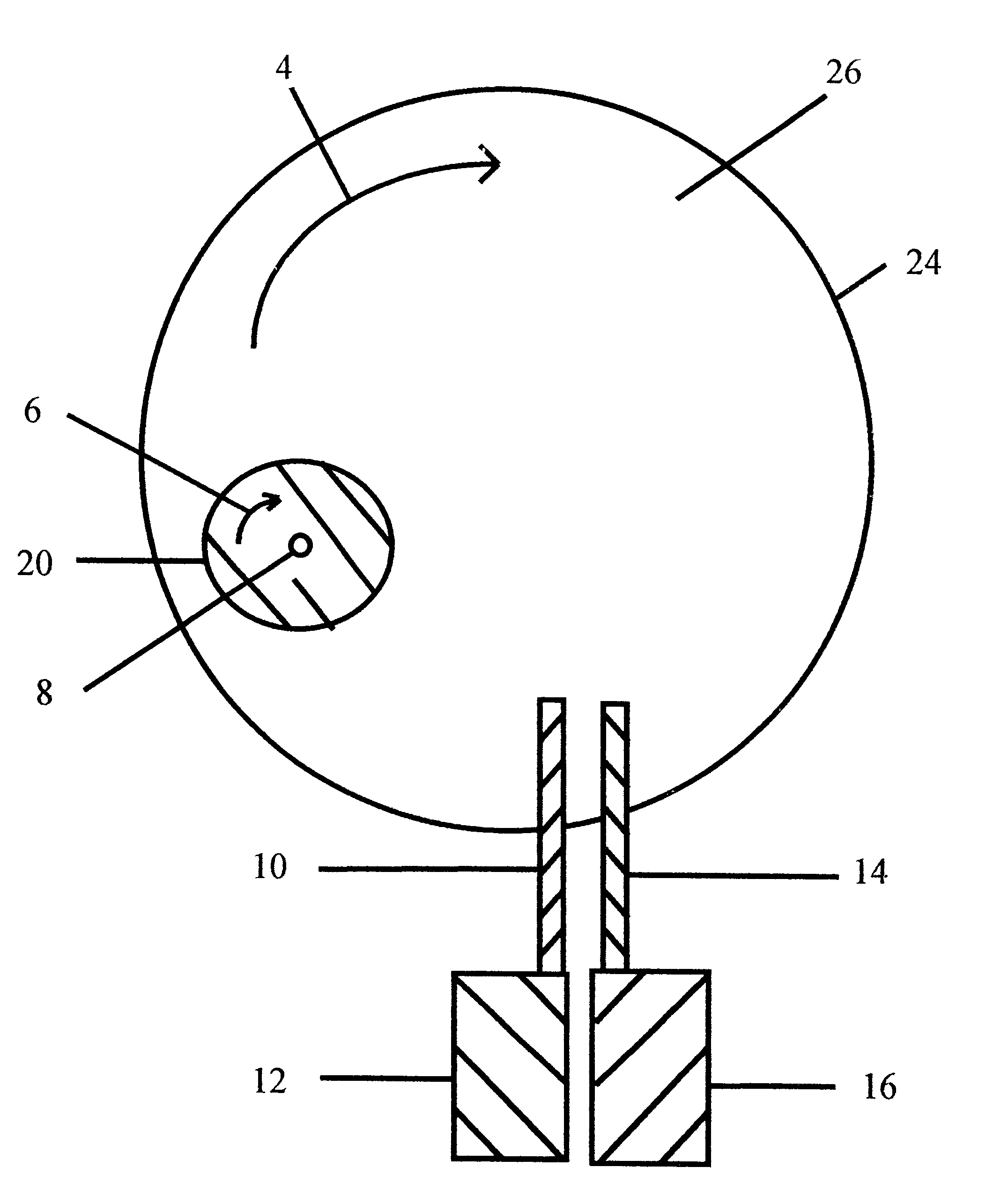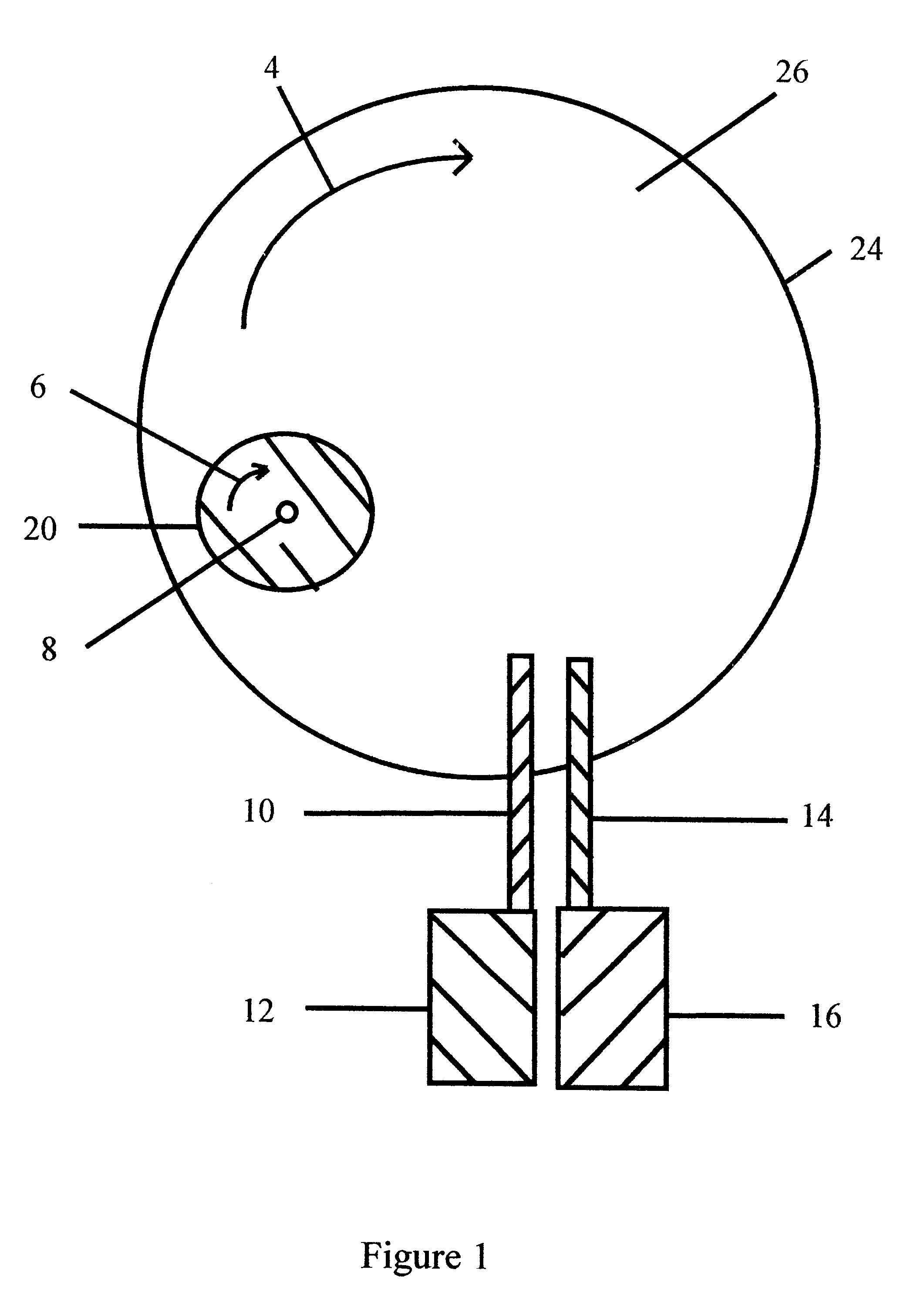Abrasive finishing with partial organic boundary layer
a technology of organic boundary layer and abrasive finishing, which is applied in the direction of lapping apparatus, manufacturing tools, lapping machines, etc., can solve the problems of reducing the surface perfection, fixing the abrasive finishing pad finishing surface can suffer from having a higher than necessary friction coefficient, and other unwanted surface damag
- Summary
- Abstract
- Description
- Claims
- Application Information
AI Technical Summary
Benefits of technology
Problems solved by technology
Method used
Image
Examples
Embodiment Construction
The book Chemical Mechanical Planarization of Microelectric Materials by Steigerwald, J. M. et al. published by John Wiley & Sons, ISBN 0471138274 generally describes chemical mechanical finishing and is included herein by reference in its entirety for general background. In chemical mechanical finishing the workpiece is generally separated from the finishing element by a polishing slurry. The workpiece surface being finished is in parallel motion with finishing element finishing surface disposed towards the workpiece surface being finished. The abrasive particles such as found in a polishing slurry are interposed between these surfaces finish the workpiece. In sharp contrast to the prior art, no abrasive slurry is introduced between the workpiece surface being finished and the finishing element finishing surface in this invention.
Discussion of some of the terms useful to aid in understanding this invention are now presented Finishing is a term used herein for both planarizing and p...
PUM
| Property | Measurement | Unit |
|---|---|---|
| flexural modulus | aaaaa | aaaaa |
| feature sizes | aaaaa | aaaaa |
| diameter | aaaaa | aaaaa |
Abstract
Description
Claims
Application Information
 Login to View More
Login to View More - R&D
- Intellectual Property
- Life Sciences
- Materials
- Tech Scout
- Unparalleled Data Quality
- Higher Quality Content
- 60% Fewer Hallucinations
Browse by: Latest US Patents, China's latest patents, Technical Efficacy Thesaurus, Application Domain, Technology Topic, Popular Technical Reports.
© 2025 PatSnap. All rights reserved.Legal|Privacy policy|Modern Slavery Act Transparency Statement|Sitemap|About US| Contact US: help@patsnap.com



